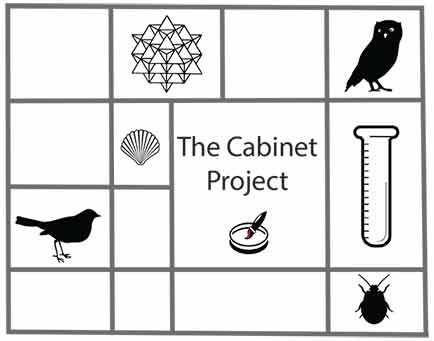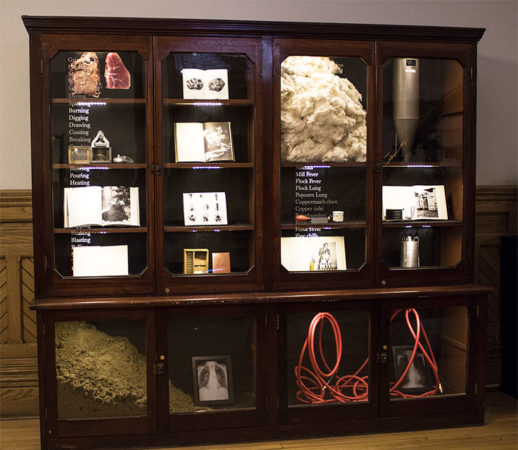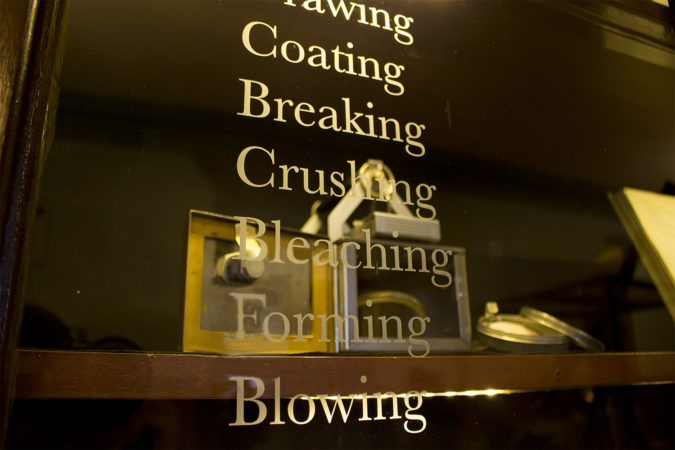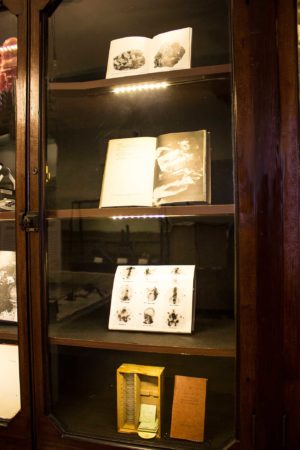Nicole Liao is a Toronto based artist with a background in Print Media and Architecture. A large part of her work is made up of representations attempting to map, record and break down real world phenomena; using formal repetition, juxtaposition and overlay, she is interested in the rift between our attempts at understanding the continuing unknown nature of things. Most recently, her show at the Klondike Institute of Art and Culture in Dawson City Yukon explored footage of the Northern Lights and artificially induced Aurora Borealis resulting from high altitude nuclear bomb tests.
Dust Counters and Gas Collectors
It is well known that there are certain occupations which confine persons to closed rooms or places in which dust particles of one kind or another are very abundant. Thus day after day persons confined in air charged with coal-dust or stone-dust or metallic-dust or cotton-dust or woolen-dust or tobacco-dust, etc., are apt to become victims of more or less well marked pulmonary affections, which are to be found fully described in systematic treatises among the so-called “diseases of occupation”. “Dust and its Dangers”, T. Mitchell Prudden, M.D.
Marcel Duchamp’s 50 cc of Paris Air, a glass ampoule containing, presumably, genuine air taken from “The City of Lights” was manufactured and gifted in 1919. Labeled “Serum Physiologique” – this mysterious Readymade object in fact seems directly inspired by air and particle measuring instruments for industrial atmospheres. Using standard units of cubic centimeters, these instruments collected atmospheric samples – invisible to the human eye – capturing, counting and making visible the various types of finely ground particles that affected the lungs of so many workers in factories, mines and foundries from the turn of the century into the present.
“Dust Counters and Gas Collectors” is an installation that seeks to make evident the relationship between the hazards of industry and the modern amenities, materials and devices we take for granted. Exploring the function and history of various dust counters and gas detector instruments from the Gage Institute (which houses the Gage Occupational and Environmental Health Unit), the project asks the viewer to contemplate Dust and Gas, not in terms of metaphysics, but in terms of their most literal material form.








